

Stephen J. Morgan
EMAT 6680
Assignment #12
Prompt:

Solution:
For this investigation I started by examining the Fibonnaci sequence where f(0)=1 and f(1)=1. I ended up generating the following chart below and looked at the ratio of every adjancent term and every second term, third term, and fourth term for f(n) up to n=30.
Here is the chart below:

From this chart we can see many things. The first thing we see is that the ratio of consecutive terms converges towards the golden ratio. The second ratio converges towards the golden ratio
plus 1. The third ratio converges towards the 2 times the golden ratio plus 1. Finally the fourth ratio converges towards 3 times the golden ratio +2. This is useful because we can make the
following realization:
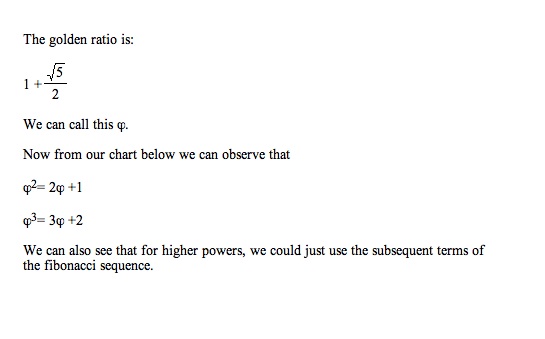
The next relationship I observed was the Lucas Sequence where f(0)=1 and f(1)=3. Once again I made a chart with values of n out to 30 and observed the ratio of every adjacent term and the ratio
of every second term. The chart can be observed below:
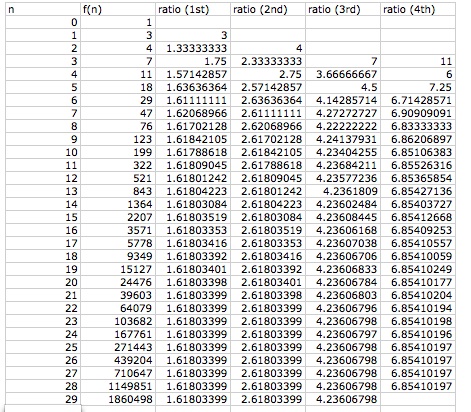
This chart is interesting in that the ratio of every adjacent term again goes to 1.618033989 and the ratio of every 2nd term goes to 2.618033989 fairly quickly. This leads me to wonder if we start with
different values for f(0) and/or f(1) if we will get the same relationships if we use the general fibonnacci sequence.
I then decided to try several more charts. The first chart below, refered to as chart 3, I let f (1)=5 but kept everything else the same. For the next chart, chart 4, I let f(1)=25 and kept everything else the same.
I then made an additional chart, chart 5, where I let f(0)=5 and f(1)=1. For chart 6, I let f(0)=10 and f(1)=1. Lastly, I made a seventh chart where f(0)=10 and f(1)=10. In all instances, I saw that the ratio of every adjacent
term went to 1.618.... and the ratio of every 2nd term eventually went to 2.618...this led me to conclude that the fibonacci sequence has very interesting properties that stay constant even if we change the output
values of two terms. I wonder what other functions have these properties.
Chart 3:

Chart 4:
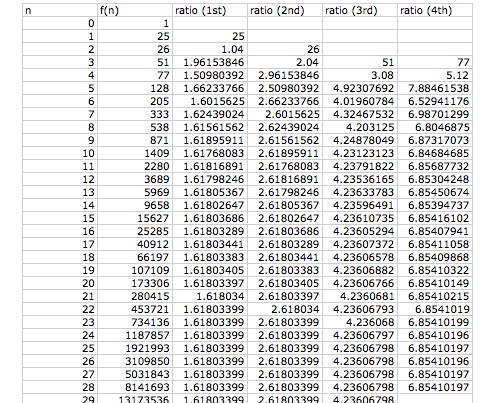
Chart 5:
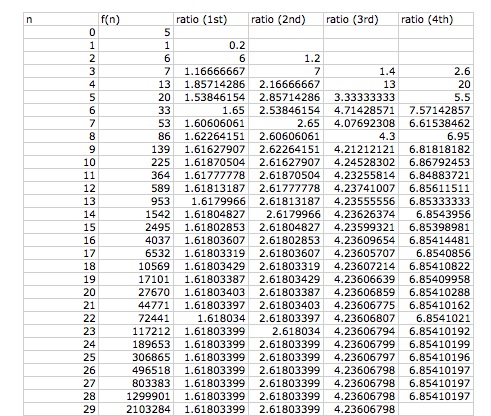
Chart 6:
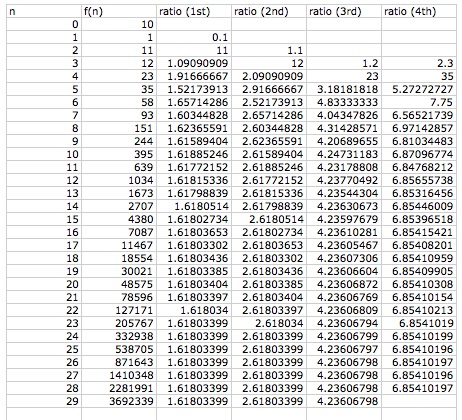
Chart 7:
